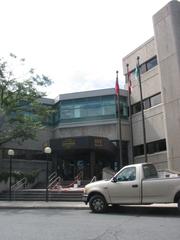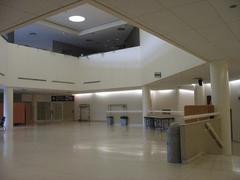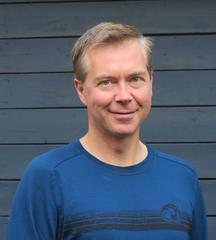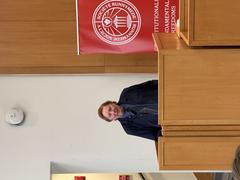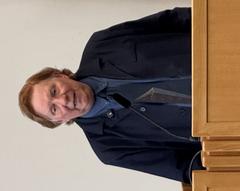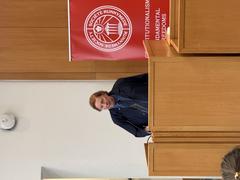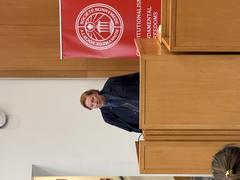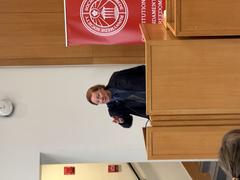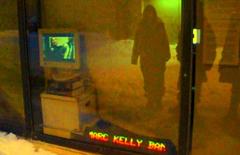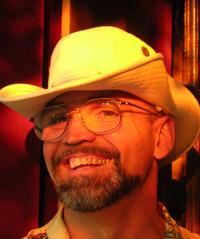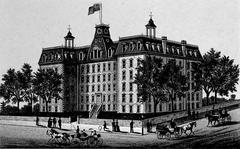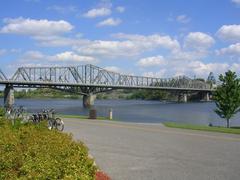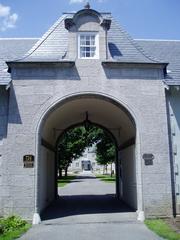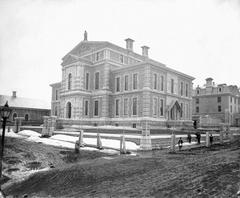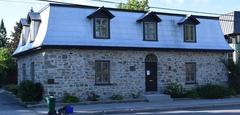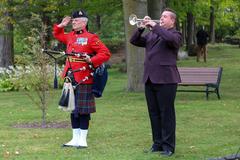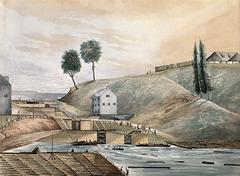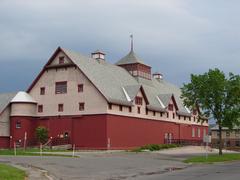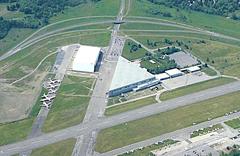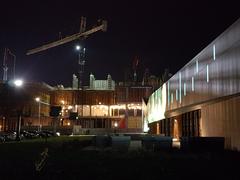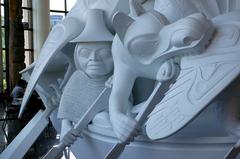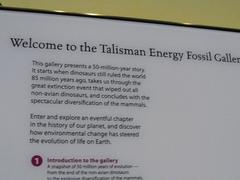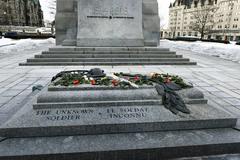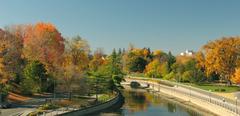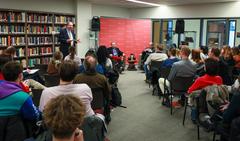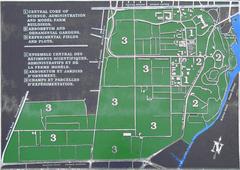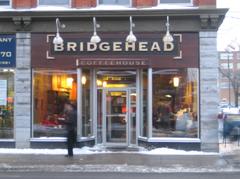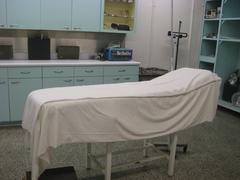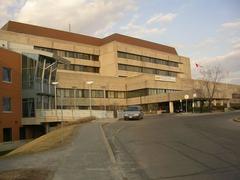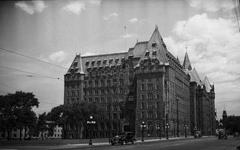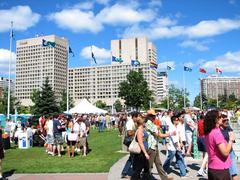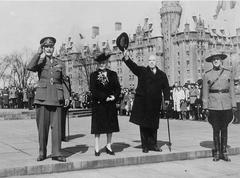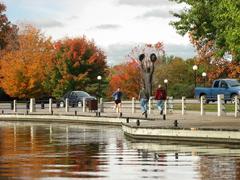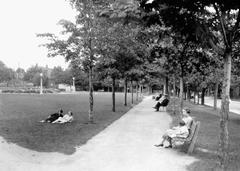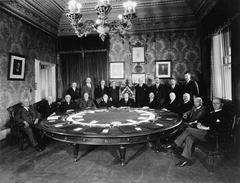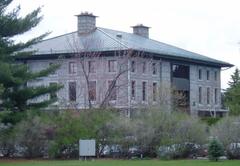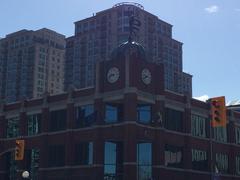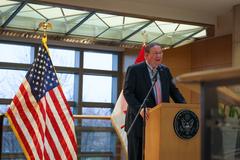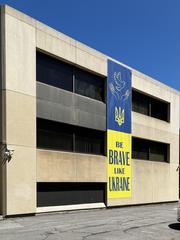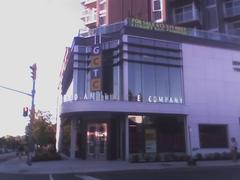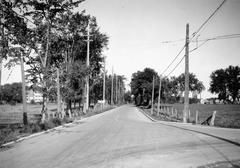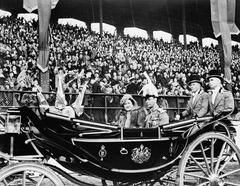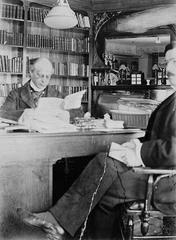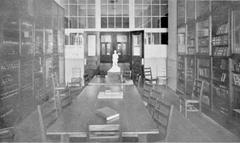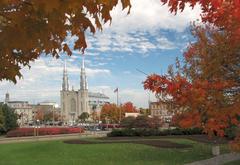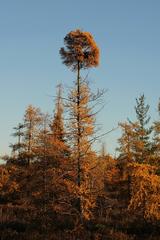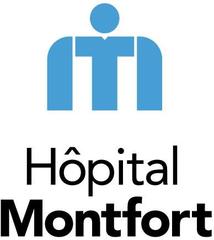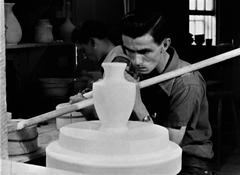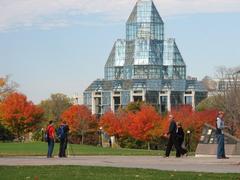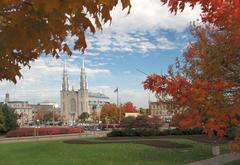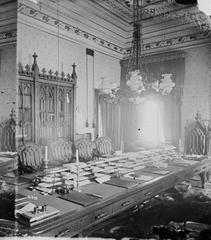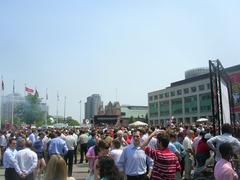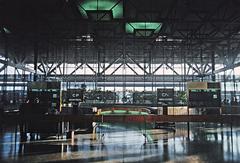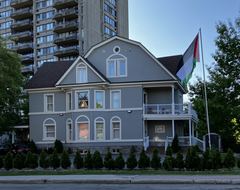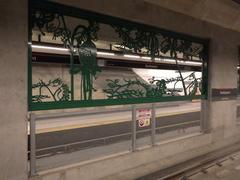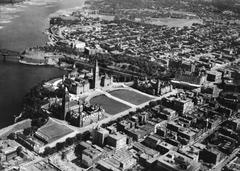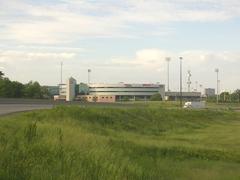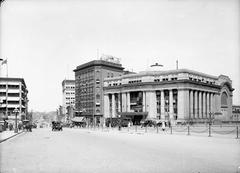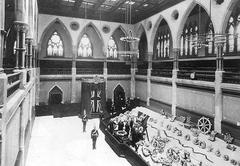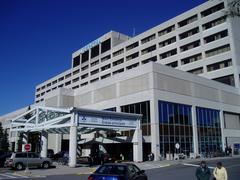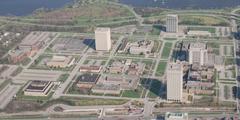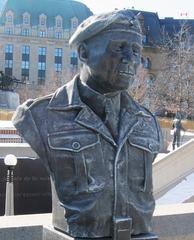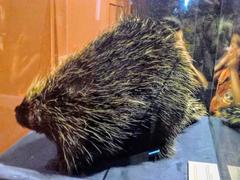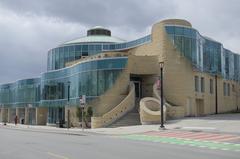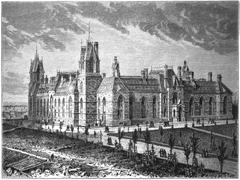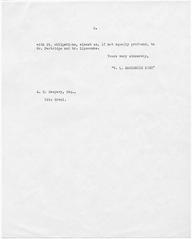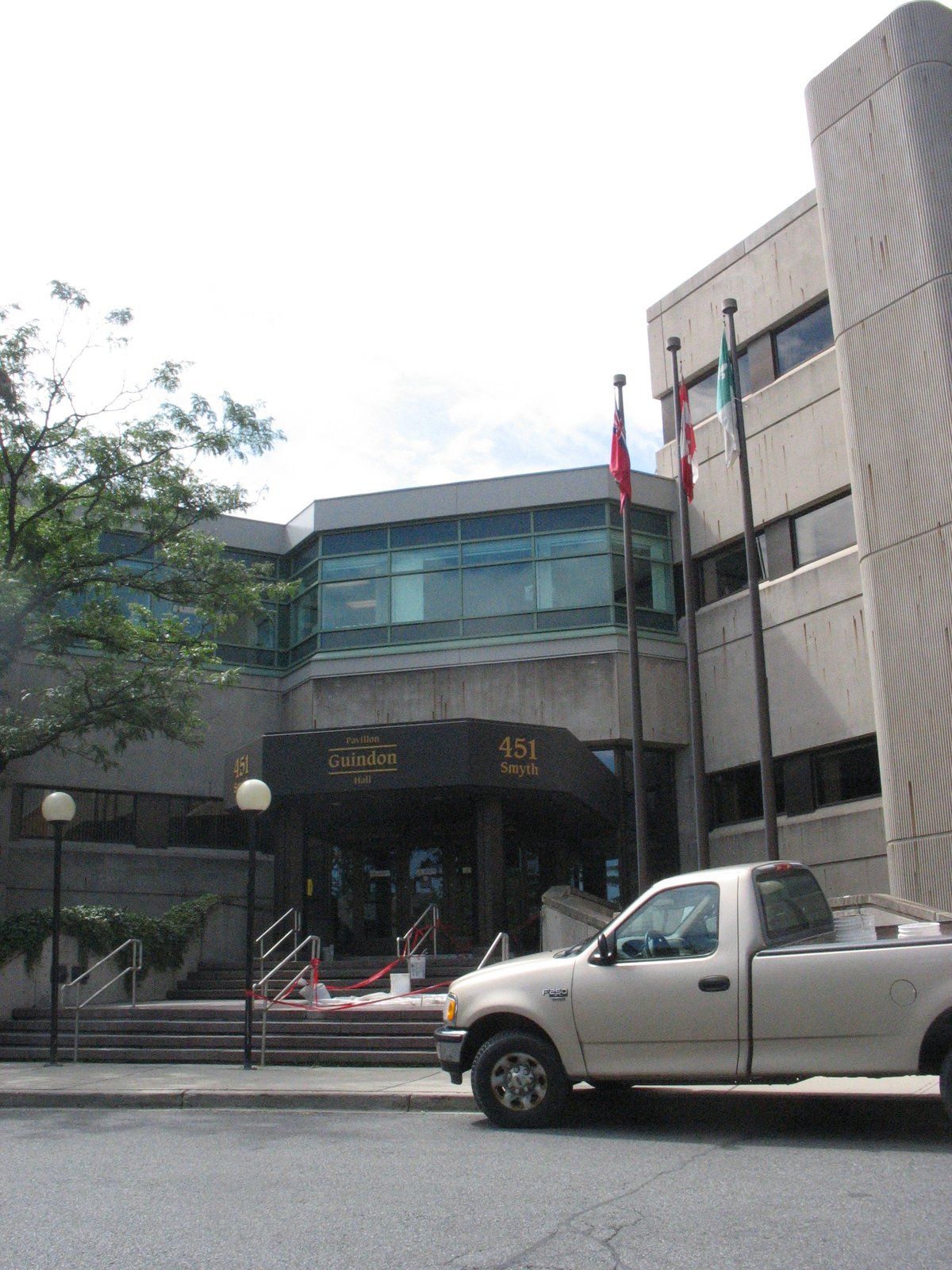
University of Ottawa Visiting Guide: Hours, Tickets, and Campus Highlights
Date: 14/06/2025
Introduction: University of Ottawa’s History and Cultural Significance
Located in the heart of Canada’s capital, the University of Ottawa is renowned as the world’s largest English-French bilingual university. Established in 1848 as the College of Bytown, it has grown into a leading institution committed to academic excellence, inclusivity, and cultural diversity (Historical Society Ottawa; Wikipedia). The campus, nestled in the historic Sandy Hill neighborhood, features an engaging mix of heritage buildings and contemporary facilities, and is within walking distance of Ottawa’s key attractions such as Parliament Hill and the National Gallery of Canada.
This guide offers essential information on visiting hours, tickets, campus highlights, accessibility, and practical travel tips. Whether you are interested in the neoclassical Tabaret Hall, the state-of-the-art STEM Complex, or Ottawa’s surrounding historical sites, this resource ensures a rewarding experience for every visitor (uOttawa Campus Tours; Ottawa Tourism). Accessibility is a core value, with the campus designed to accommodate visitors of all abilities. This guide also provides answers to frequently asked questions and details on how to make the most of your visit (University of Ottawa Visitor Information).
Table of Contents
- Founding and Early Development
- Transition to University Status and Bilingual Mandate
- Expansion, Inclusivity, and Academic Growth
- Secularization and Modernization
- Institutional Bilingualism and Cultural Significance
- Research Excellence and Innovation
- Architectural Heritage and Campus Landmarks
- Visiting the University of Ottawa: Hours, Tickets, and Accessibility
- Nearby Attractions and Travel Tips
- Frequently Asked Questions
- Commemoration and Community Impact
- Plan Your Visit: Architectural and Cultural Landmarks
- Museums, Art, and Green Spaces
- Student Life and Community Engagement
- Visitor Essentials: Hours, Accessibility, Transportation, and Dining
- Tips for a Memorable Visit
- Final Thoughts
- Related Ottawa Historical Sites: Parliament Hill & Centennial Flame
- Summary and How to Stay Updated
- References
Founding and Early Development
The university began as the College of Bytown in 1848, founded by Bishop Joseph-Bruno Guigues as a bilingual Roman Catholic institution aiming to unite Ottawa’s anglophone and francophone communities (Historical Society Ottawa; Wikipedia). Initially located near Notre-Dame Cathedral Basilica, it quickly outgrew its original site and moved to Sandy Hill in 1856, thanks to a generous land donation from Louis-Théodore Besserer.
Transition to University Status and Bilingual Mandate
In 1861, the College of Bytown became the College of Ottawa, and in 1866 it gained university status by royal charter, the last Canadian university to receive such a charter from London (Wikipedia). Its bilingual character was central from the start, and in 1889, a pontifical charter further solidified its Catholic roots.
Expansion, Inclusivity, and Academic Growth
The institution expanded rapidly in the early 20th century, affiliating with francophone colleges across Ontario and Western Canada and opening its doors to women in 1919. The addition of new faculties between 1922 and 1936 reflected a growing commitment to inclusivity and academic breadth (Historical Society Ottawa).
Secularization and Modernization
In 1965, the university transitioned to a public, secular institution, while maintaining its bilingual and bicultural mandate through Ontario legislation (uOttawa Archives). This move expanded academic offerings and strengthened its secular governance (Wikipedia).
Institutional Bilingualism and Cultural Significance
Today’s University of Ottawa is a global leader in bilingual education, with official policies and extensive services supporting both English and French. It also champions francophone, Indigenous, and multicultural initiatives to foster equity and diversity (uOttawa Faculty of Arts).
Research Excellence and Innovation
Ranked among Canada’s top research universities, uOttawa is home to leading institutes in health sciences, social policy, and engineering. A landmark achievement was Canada’s first neonatal artificial heart transplant in 1989, performed at the University of Ottawa Heart Institute (Wikipedia). The university’s research environment emphasizes collaboration, equity, and impact (uOttawa Faculty of Arts).
Architectural Heritage and Campus Landmarks
The main campus covers 42.5 hectares in Sandy Hill, blending historic and modern architecture. Landmarks include:
- Tabaret Hall: Iconic neoclassical building, university’s administrative center (Wikipedia).
- Colonel By Hall: Honors the engineer of the Rideau Canal.
- Morisset Library: The central library, symbolizing academic innovation (uOttawa Research).
- STEM Complex: Showcases sustainable design and collaborative spaces (uOttawa Campus Life).
Events like Doors Open Ottawa offer opportunities to tour historic campus buildings (Doors Open Ottawa 2025).
Visiting the University of Ottawa: Hours, Tickets, and Accessibility
- Campus Hours: Open daily from 7:00 AM to 11:00 PM.
- Admission: General access is free; some tours and exhibitions may require tickets, available via the University of Ottawa Visitor Information page.
- Guided Tours: Bilingual tours highlight campus history, architecture, and student life. Book in advance, especially during events.
- Accessibility: The campus is barrier-free, with ramps, elevators, accessible washrooms, and support for visitors with disabilities. Service animals are welcomed.
Nearby Attractions and Travel Tips
Situated near downtown, the university is a short walk from Parliament Hill, the National Gallery of Canada, and ByWard Market. Public transit (OC Transpo buses, O-Train) stops nearby. Parking is available for a fee, but public or active transportation is encouraged (Ottawa Tourism).
Frequently Asked Questions
Q: What are the University of Ottawa’s visiting hours?
A: 7:00 AM to 11:00 PM daily. Specific buildings may have different hours.
Q: Are tickets required?
A: General access is free; some tours or exhibitions require tickets.
Q: Is the campus accessible?
A: Yes, barrier-free with accessible facilities.
Q: Are tours bilingual?
A: Yes, offered in both English and French.
Q: What else is nearby?
A: Parliament Hill, National Gallery, Rideau Canal, ByWard Market.
Q: Where can I find official information?
A: University of Ottawa Visitor Information
Commemoration and Community Impact
In 1998, the university unveiled plaques in Tabaret Hall honoring alumni who served in Canada’s armed forces, reflecting its deep roots in national history (Wikipedia). The university’s ongoing contributions help make Ottawa a vibrant, diverse, and intellectually dynamic city (Facts.net).
Plan Your Visit: Architectural and Cultural Landmarks
Tabaret Hall
The university’s symbolic centerpiece, featuring neoclassical architecture and hosting major events (uOttawa Campus Tours).
Morisset Library
Main academic library with extensive bilingual collections and a modernist design (uOttawa Research).
STEM Complex
A hub of science and technology, known for its innovative, sustainable design (uOttawa Campus Life).
Historic and Modern Juxtaposition
Walking the campus reveals the evolution of Canadian academic architecture (TripHobo).
Museums, Art, and Green Spaces
Museum Collections and Public Art
Small museums and curated exhibits are found within faculty buildings. Art installations and murals celebrate diversity, reconciliation, and scientific discovery (uOttawa Community and Culture; TripHobo).
Green Spaces and Sustainability
The campus features greenways, courtyards, and tree-lined walkways, with a commitment to sustainable landscaping and facilities (uOttawa Sustainability; Ottawa Tourism).
Student Life and Community Engagement
Student Centres and Gathering Spaces
The University Centre is the heart of student activity, with food courts, clubs, and regular events (uOttawa Campus Life).
Francophone and Indigenous Services
Dedicated programming and support spaces foster inclusivity and cultural engagement (uOttawa Community and Culture).
Wellness and Recreation
Modern fitness, health, and counseling facilities support campus wellbeing (uOttawa Health and Wellness).
Visitor Essentials
Hours and Tickets
- Campus: 7:00 AM–10:00 PM
- Special events/tours: Check uOttawa Campus Tours
- Admission: Free; tickets may be required for tours/events
Accessibility
Contact the Liaison Office for specific accommodations (uOttawa Accessibility).
Transportation and Parking
Easily accessible by transit, car, or bicycle. Limited paid parking available (uOttawa Visit Us).
Dining
Campus offers cafeterias, coffee shops, and a 24/7 dining hall. ByWard Market provides many additional options (Ottawa Tourism).
Events
Check the university events calendar for lectures, exhibitions, and festivals.
Tips for a Memorable Visit
- Best Time: September–April for vibrant campus life; quieter in summer.
- Duration: 1.5–2 hours for a full campus tour.
- Photography: Capture both historic and modern buildings, especially Tabaret Hall.
- Combine Activities: Pair your visit with Ottawa’s nearby attractions.
- Plan Ahead: Reserve tours and confirm accessibility needs in advance.
Final Thoughts
A visit to the University of Ottawa offers a rich blend of history, culture, and innovation. Take advantage of guided tours, campus events, and the nearby attractions for a full Ottawa experience. Download the Audiala app for interactive audio tours and stay updated via university and tourism social media channels.
Ottawa Historical Sites: Parliament Hill & Centennial Flame
Parliament Hill
Parliament Hill is the symbolic heart of Ottawa, renowned for its Gothic Revival architecture and role in Canadian democracy. Open year-round (9:00 AM–5:00 PM), the grounds are free to explore. Guided tours of the Parliament Buildings are also free but require advance reservation (Parliament of Canada Visitor Services). Highlights include the Peace Tower, Changing of the Guard, and the Library of Parliament. The site is accessible, with amenities and nearby public transit (Ottawa Tourism).
Centennial Flame
The Centennial Flame, unveiled in 1967, celebrates Canadian unity. Located on Parliament Hill, it is accessible 24/7 at no cost. The area is wheelchair-friendly and included in many guided tours (Parliament of Canada Accessibility). Combine your visit with nearby sites such as the National War Memorial and ByWard Market.
Summary and How to Stay Updated
Visiting the University of Ottawa offers insight into Canada’s bilingual heritage, academic leadership, and vibrant campus life. The university’s accessible, welcoming environment and strategic location make it an ideal destination for visitors of all backgrounds (Wikipedia; Historical Society Ottawa; uOttawa Campus Tours; Ottawa Tourism). Enhance your visit by attending campus events, exploring nearby historical sites, and using resources like the Audiala app. For the latest updates, consult the official university website and connect via social media.
References
- Historical Society Ottawa: University of Ottawa
- Wikipedia: University of Ottawa
- uOttawa Campus Tours
- Ottawa Tourism
- University of Ottawa Visitor Information
